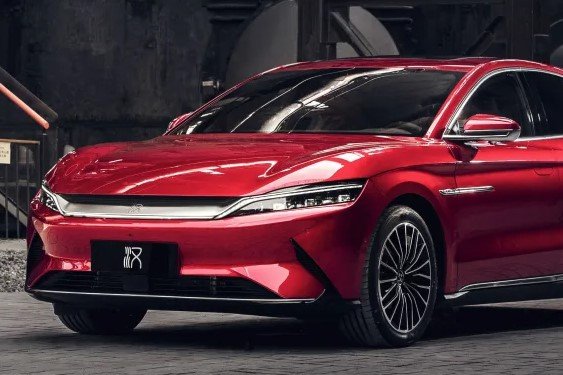India’s automakers, especially those banking big on electric vehicles, are facing a ticking clock. China’s new export rules on rare earth magnets are holding up supplies, and an Indian industry delegation is still waiting for Beijing to say yes to the talks.
A group of 40–50 Indian auto industry executives have received visas to travel to China, but the meeting they’re planning hinges on one crucial thing: approval from China’s Ministry of Commerce. Until then, their bags remain packed, and hopes are cautiously on hold.
New Rules, New Hurdles
China, which handles more than 90% of the world’s rare earth magnet processing, isn’t exactly making things easy right now. In April, Beijing imposed new export restrictions that changed the way rare earth materials leave the country.
The catch? Special licenses are now mandatory. Exporters also need to disclose where the magnets are headed and how they’ll be used. It’s an extra layer of paperwork and politics, all wrapped in one.
These aren’t just any magnets. These are critical for motors in electric vehicles, wind turbines, and a range of high-tech gear.
The list of restricted items includes seven rare earth elements and all finished magnet products. That means India’s automakers — already juggling enough with EV adoption and battery imports — now have yet another headache to deal with.

Who’s Feeling the Pinch?
While this might seem like a macroeconomic tale, it’s really hitting closer to the ground — at factories, on assembly lines, and in boardrooms of EV startups and legacy OEMs alike.
One senior executive from an Indian component manufacturer described the situation as “uncomfortable, but not yet panic mode.” But that could change fast.
If delays stretch out much longer, production timelines could get messy. Some firms have already started adjusting their forecasts. A few are even revisiting old local sourcing strategies, but it’s a tough pivot when you’re this deep into global supply chains.
A senior procurement head from a Tier 1 auto component firm put it bluntly: “We don’t have the luxury of time.”
What the Delegation Wants
The Indian team planning the trip isn’t going to China just for handshakes and good food. They want clarity, assurance, and speed.
They’re hoping to secure a few key things:
-
Early approvals for licenses on ongoing orders
-
Better visibility on future magnet exports
-
Possible exemptions or fast-track access for Indian firms under long-term contracts
No one’s expecting miracles. But they do need something to work with — a framework, a timeline, anything.
Meanwhile, they’re treading carefully. No one wants to irritate Beijing, especially when geopolitical tensions are simmering just beneath the surface.
How Much Does India Depend on China?
A lot more than it would like to admit.
Here’s a quick look at the numbers based on trade data and estimates from India’s Ministry of Commerce:
| Year | Rare Earth Magnet Imports from China (USD) | Percentage of Total Imports |
|---|---|---|
| 2022 | $437 million | 81% |
| 2023 | $529 million | 84% |
| 2024 | $616 million | 87% |
That’s not just reliance — that’s a chokehold.
India has tried to diversify. Australia and Vietnam were explored. Japan was considered a tech partner. But the sheer scale of China’s grip on the rare earth magnet industry has made alternatives more of a theory than a reality.
Everyone’s Eyes Are on the Clock
A senior executive from one of India’s largest EV manufacturers said their supply chain was “stable for now,” but acknowledged that they only had about 5–6 weeks of buffer stock left.
That’s not much.
Another sourcing lead said they’ve begun rationing magnets internally. “We’re prioritizing higher-margin models,” he said, “because that’s where the business case can still be protected.”
Smaller EV makers — the kind running lean operations and aggressive burn rates — are feeling even more jittery. Some have halted marketing spend to protect operating cash flow. A few have paused production on specific variants, waiting for more clarity.
Things could spiral fast if there’s no breakthrough soon.
Is There a Plan B?
Kind of. But it’s patchy.
India does have its own rare earth deposits. Problem is, the domestic supply chain lacks the tech muscle to process them into magnets at commercial scale. That gap — the midstream capability — is what’s haunting policymakers now.
In 2022, the Indian government identified rare earths as a critical sector and formed a task force. It was a start. But progress has been, well, slow.
Some public-sector units have begun R&D initiatives. But turning rare earth ore into high-grade NdFeB magnets takes both capital and time. Not to mention global trust in quality standards.
Right now, most automakers just want to make it through this bottleneck without rewriting their 2025 production plans.
A Bit of Hope, But Not Much Clarity
There’s cautious optimism that China will allow the Indian delegation to proceed with meetings soon. Industry officials say informal backchannels are active. Diplomacy is playing its quiet role.
Still, there’s no official word.
A few companies are reportedly holding out on placing new orders until they get some visibility. Some fear that if the current system stays opaque, prices could rise. Others worry about broader decoupling rhetoric that might make sourcing even harder.
So yes, the magnet may be small — but the mess around it is anything but.
